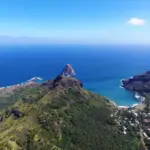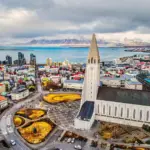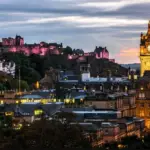An Exotic Eden Hidden in the Depths of the Indian Ocean

Introduction
Unveiling Socotra Island: A Unique and Undiscovered Paradise
Diving deep into the Indian Ocean, hidden in turquoise waters, lies a secret and little-explored treasure: Socotra Island. This unique natural paradise captivates the hearts of intrepid travelers with its indescribable beauty and otherworldly landscapes. Despite its limited fame, Socotra is a destination that deserves special attention for its distinctive and incomparable characteristics.
On this magical island, every corner reveals an unexpected surprise. Located off the northeastern coast of the Horn of Africa, south of Yemen, Socotra is a geographical jewel sculpted by nature over the centuries.
Its majestic mountains rise proudly above coastal plains and deep valleys. These imposing rock formations are silent witnesses to the geological events that shaped this unique island.
Overview of Geographic Features
Socotra's strategic location endows it with exceptionally rich and endemic biodiversity. The crystal-clear waters of the Indian Ocean shelter vibrant coral reefs that support a diverse marine ecosystem, while the white-sand beaches invite visitors to relax under the tropical sun.
However, it's when we delve deeper into the island's interior that we witness a true natural spectacle. Socotra is blessed with a dazzling variety of terrestrial ecosystems.
Its fertile valleys are filled with winding rivers and lush vegetation, offering a striking contrast to the imposing mountains that dominate the landscape. The island's geological richness has resulted in surreal landscapes, where dramatic cliffs meet verdant plateaus and golden sand dunes stretch as far as the eye can see.
It is in the geographic peculiarities and uniqueness of this island ecosystem that Socotra's fascination lies. This hidden gem of the Indian Ocean awaits those willing to explore. explore its natural wonders, offering a truly unparalleled experience for curious travelers in search of the extraordinary.
Geography and Climate
A unique geographical location in the Indian Ocean
Socotra Island is a rare gem located in the Indian Ocean, near the Horn of Africa. Its geographic isolation contributes to its uniqueness and preservation.
Located about 350 km south of the Arabian Peninsula, Socotra is often referred to as "the strangest island in the world." Its strategic position between the Red Sea and the Indian Ocean gave it a significant role in ancient trade routes, making it a unique cultural hub.
A spectacular mountainous landscape
Socotra's mountainous landscape is truly impressive and captivating. The island is marked by majestic peaks rising against the endless blue sky.
Mountains like Mount Hajariya reach incredible heights, providing stunning panoramic views of the surrounding region. Furthermore, the lush valleys stretching between the mountains are veritable oases of verdant palm trees and exotic plants.

An arid climate with contrasting seasons
The climate on Socotra is characterized by remarkable aridity, with hot summers and mild winters. During the summer months, temperatures can easily exceed 40 degrees Celsius, creating a challenging environment for the living creatures that inhabit the island.
However, the winter monsoons bring welcome relief, bringing scarce but crucial rainfall to sustain life on the island. This seasonal alternation creates a unique dynamic and profoundly influences the region's ecosystem.
The combination of Socotra's strategic geographic location in the Indian Ocean, its magnificent mountainous landscape, and its arid, contrasting climate make this island a truly special and intriguing place. By exploring its geographic and climatic peculiarities, it's possible to better understand the unique beauty and characteristics that make Socotra an unmissable destination for nature lovers and exotic destinations.
what to do on socotra island
- Once on the island, you can explore its "alien" landscapes, which include paradisiacal beaches like Qalansiyah and Shoab, as well as endemic species such as dragon trees, frankincense, desert rose and cucumber tree.
- The island does not have tourist infrastructure, such as hotels and restaurants, but it is possible to sleep in campsites in the places visited.
- Some activities that can be done include exploring Dihamri's incredible marine life.
- If you want to visit Socotra before it becomes a tourist destination full of five-star resorts and restaurants, the travel agency Landescape has put together an eight-day itinerary.
how to get to socotra island from brazil
To reach Socotra Island from Brazil, the most common option is to connect in Abu Dhabi, in the United Arab Emirates. From Abu Dhabi, There are weekly flights to Socotra.
Here are some route options:
- Option 1: Sao Paulo – Socotra
- Take a flight from São Paulo to Abu Dhabi.
- In Abu Dhabi, connect to Socotra.
- This option usually takes about 2¼ days and costs approximately $1139.
- Option 2: Sao Paulo – Socotra Governorate
- Take a bus from São Paulo to Curitiba.
- In Curitiba, take a flight to Abu Dhabi.
- In Abu Dhabi, connect to Socotra.
- This option is a bit cheaper, costing around US$$1033.
- It is important to note that the island of Socotra has no direct connection with Yemen, either by boat or plane.
- Therefore, it is necessary to make a connection in Abu Dhabi to reach the island.
- Please remember to check visa requirements and travel restrictions before you travel. plan your trip to Socotra.
- It is always recommended to check with airlines and travel agencies for up-to-date information on available flights and transportation options.
endemic plants found only in Socotra
Socotra Island is home to a unique botanical treasure trove, with an abundance of endemic plants found nowhere else in the world. These unique species have evolved over the centuries, adapting to the island's extreme climatic conditions and geographic isolation.
Among the most notable are the famous “blood trees”, Known for their intense red trunks and lush green foliage, these trees belong to the Dracaena cinnabari species and are considered true jewels of Socotra's flora.
Focus on the famous “blood trees” with intense red trunks
Blood trees, or Dracaena cinnabari, are a striking sight in the Socotra landscape. With their majestic trunks that seem to ooze red drops as if from open wounds, these trees have a unique and mysterious character. The intense red hue is the result of the accumulation of dragon's blood resin, which also has medicinal properties and has been valued throughout history for its healing properties and natural dyes.

the strange shapes of the dragon trees, looking like something out of a fairy tale
Besides blood trees, Socotra is home to the fascinating dragon trees. These trees, belonging to the Dracaena draco species, have unique and surreal shapes that seem straight out of a fairy tale.
Their twisted branches and dense foliage resemble mythological creatures at rest, ready to spring to life at any moment. The beauty and uniqueness of these trees transform Socotra into a truly magical setting, where the imagination is awakened and enchantment reigns.
the presence of a wide variety of rare medicinal plants
Beyond the impressive aesthetics of Socotra's endemic trees, it's worth highlighting the botanical richness that offers a wide range of rare medicinal plants. Over the years, local communities have used these natural resources to treat a variety of diseases and conditions.
From aromatic herbs to powerful roots, the medicinal plants found on this remote island have been valued for their healing properties for centuries. The unique biodiversity of Socotra's flora makes it a true medicinal treasure that deserves to be protected and explored wisely.
Conclusion
Socotra Island is an extraordinary place where nature defies the limits of imagination. With its exotic flora, including the famous "blood trees" and dragon trees, the island stands out as a truly magical destination. Beyond the stunning beauty of these endemic species, Socotra also offers an abundance of rare medicinal plants that have been used by local communities for centuries.
This unique combination of beauty, rarity, and medicinal value makes Socotra a place of inestimable importance for biodiversity preservation and scientific research. Therefore, it is crucial that these natural resources be protected and cherished with respect for future generations.
Lucas Wanderlust has a tireless spirit of adventure, always seeking new travel experiences. Fascinated by the world and the possibility of exploring unknown destinations, he fell in love with the sense of freedom and self-discovery that traveling alone provides. With a backpack on his back and a heart open to the unknown, Lucas embarks on exciting journeys, where each destination becomes a unique chapter in his life story. He gives himself body and soul to the magic of solo travel, inspiring others to follow in his footsteps and discover themselves through adventure.







